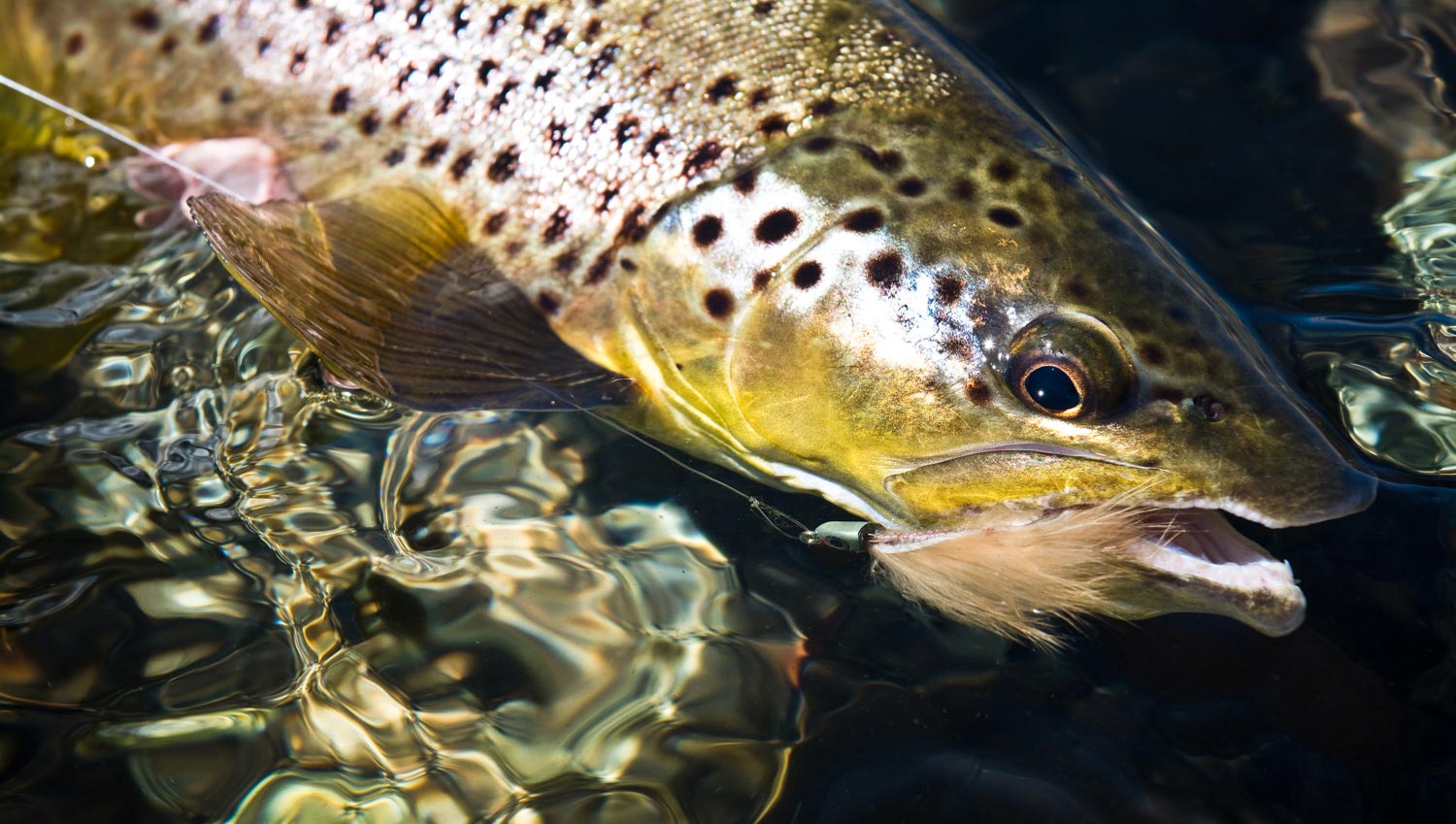By Louis Cahill
Have you ever had a day of streamer fishing when the fish just wouldn’t commit?
I had the mother of those days recently. I was fishing streamers from the boat and was literally getting follows every other cast. That’s great, but the fish just wouldn’t eat the fly. They would charge, swirl, nip and blow up all over it but never eat it. It was frustrating to say the least.
I changed patterns and got the same result. After the twentieth nice brown took a pass, I added a Wooly Bugger as a dropper. No dice. The fish would swim right past the Bugger to ogle the streamer. I switched up my retrieve, all the stuff you should try, and nothing worked. Until I changed the water I was fishing.
I started targeting the fastest water I thought could hold fish and, sure enough, things turned around. I did not slow down my retrieve and, because the water and the fly were moving so quickly, the fish had to make a decision on the spot. Not all of them committed, but some did.
It was a good lesson. Sometimes the problem isn’t you. I’m reminded of the saying, “if you don’t like what’s being said, change the conversation.” Showing your fly to a fish with a different point of view does just that. Try it next time you’re getting failure to commit.
Louis Cahill Gink & Gasoline www.ginkandgasoline.com hookups@ginkandgasoline.com Sign Up For Our Weekly Newsletter!
Sign Up For Our Weekly Newsletter!


Kudos to the power of thinking through a situation and changing things up. I think most days fly fishing is more of a thinking game than a physical one. Thanks
Makes a lot of sense. I’ve always thought that fish that are in fast moving water are there to eat. Typically the faster water in any river or stream is shallower and thus exposes fish to predation. It also takes more energy to to be in fast water so you go there for a purpose. That purpose would be to take in more calories than they are burning being there. I guess that the caveat to this rule would be that faster moving or riffled water can be more oxygenated. The higher O2 levels may be vital certain times of year.
Fish in undercut banks or deeper slower water are chillin’ and eating when the opportunity arises. I can see why they may be less apt to commit. They feel safe where they are. Assuming they’re well fed they’re only going to eat what looks totally appetizing, attainable, and natural.